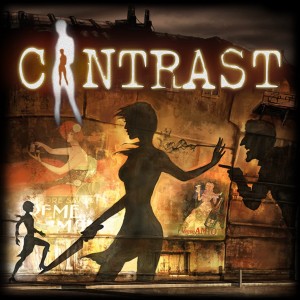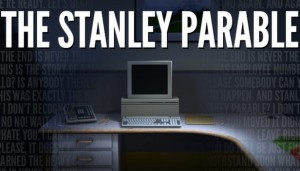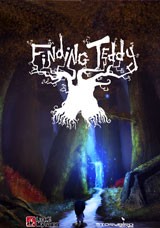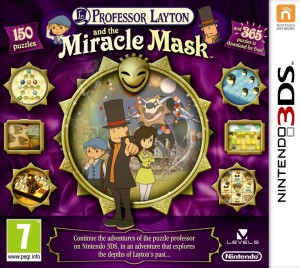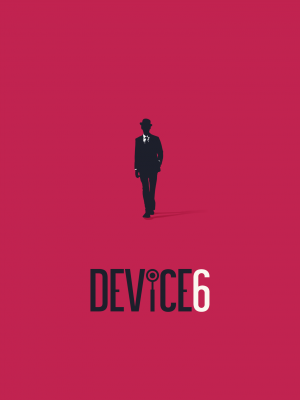Review for 1954: Alcatraz page 2
A mile and a half off the San Francisco coast, the lighthouse on Alcatraz Island pulses through the fog. This is still true today, even though the famously escape-proof federal prison shut down in 1963. Also known as The Rock, Alcatraz is an iconic landmark open to tourists who can explore the abandoned penitentiary and its surrounding grounds with far more freedom than the inmates who once lived within its walls—and now, thanks to German developer Daedalic and Bay Area-based Irresponsible Games, adventure gamers can make the trip, too.
Set on Alcatraz Island and San Francisco beyond, 1954: Alcatraz follows convicted felon Joe’s attempt to escape while his beatnik wife Christine makes plans to skip town to Mexico. It’s an imaginative premise—certainly one we haven’t seen before in an adventure game—and it’s clear that local designer Gene Mocsy has carefully researched the setting and time period for authenticity. After my meeting with Mocsy at last year’s Game Developer’s Conference, this is a game I really wanted to like, but unfortunately there are too many flaws and unrealized opportunities holding it back.
We learn during the opening credits that a botched armored truck heist, followed by an attempt to escape the medium-security Leavenworth, landed Joe on The Rock. This credits sequence is the first tip-off to 1954: Alcatraz’s disappointing production values: rather than a cinematic or even a sequence of stills consistent with the game’s colorful cartoon art style, it’s presented in a series of freehand black-and-white sketches so sloppy I mistook them for placeholder art. The jarring style makes the underlying events hard to understand and gives a poor first impression. Fortunately this art style doesn’t appear again in the game, which makes me wonder if more ambitious plans for the opening were scrapped at some point during development.
The game begins in Joe’s cell on the day of his wife’s monthly visit. A quick tutorial acquaints us with the controls—basic point-and-click, with the inventory accessed with the mouse wheel or by moving the cursor to the left of the screen. After a quick look around the cell Joe is summoned to roll call, where he quickly makes his intentions known to the old-timer in line behind him: he has to get off this rock.
Graphically, 1954: Alcatraz meshes 3D characters with 2D backgrounds, with underwhelming results. The cartoon style is reminiscent of Runaway and many of the exterior locations have breathtaking use of color—especially real locations like the Alcatraz ferry pier at sunset and the Golden Gate Bridge at night. Some interiors are cluttered and fun to poke around in, like Christine’s messy apartment. Others, such as a police interrogation room, are much simpler, though at least there the lighting and camera angle puts a noir spin on a relatively minimalist space. Taking the noir influence even further, a “1954 Mode” accessible from the settings menu applies a sepia-toned filter over the graphics—totally unnecessary, but a fun option. Hotspots are easily identified by pressing the space bar (which proves handy, since some are quite small or slightly off to the side of the items they represent), and though these are not ridiculously abundant, the game generally provides a handful of areas to look at or interact with per screen.
While the background art has a cohesive style that made me feel like I’d entered a particular world, the 3D characters are all over the place: clunky, inconsistent, and awkwardly animated. The stylish, cinch-waisted Christine is all out of proportion with her oafish husband Joe, who lumbers around like he has rocks in his shoes. For the most part, the women are consistently curvy and cute, while the male characters are awkward with huge heads or hands and slow, painful walk animations. The characters don’t look like they belong in the same world depicted by the backgrounds, which doesn’t directly impact the story or gameplay but may make it difficult to lose yourself in the world. At least they're all capably voice acted—some performances better than others, but none so off-base as to be too distracting.
Both Joe and Christine are playable characters, and once she appears in a few scenes, you can switch between them whenever you want by selecting the character’s portrait on the inventory screen. Because Joe’s locked up and Christine uses up her monthly visit in the first five minutes, they act independently for most of the game, with only a few late puzzles involving communication through a liaison. I liked this structure—from a storytelling standpoint, knowing they’re so close and yet so far from each other amplifies the isolation of their situations; and practically it means you can change characters if a puzzle has you stuck.
Each protagonist has an ultimate goal to work toward: Joe wants to escape, and Christine needs to get the mob, which is looking for the money Joe made off with in the heist, off her back. This set-up is good as a starting point, but sadly the story doesn’t develop. Joe’s situation never goes from being a pipe dream to a matter of life or death—he seems to want to escape from prison simply because when you’re a convict in Alcatraz, you want to escape from prison. Likewise, Christine is dodging a gangster who says he’ll kill her in a month if she doesn’t pay up, but even after multiple repetitions of this fact I didn’t feel her fear or a true sense of urgency driving her actions. (The month-long timeframe is irrelevant, since the entire game takes place over a day or two—why not raise the stakes by having the mob threaten to kill her by Friday?) 1954: Alcatraz is approximately six hours long and the whole time you’re plodding along at the same pace, basically running errands around Alcatraz and San Francisco. There are a couple of turning points that, looking back, I think were supposed to heighten the drama, but at the time didn’t feel that way. Instead it’s all even-keeled, played in the same leisurely key and tempo.
In the mid-1950s, San Francisco’s North Beach neighborhood was at the center of an artistic renaissance and home to beat writers and bohemian artists including Jack Kerouac and Allen Ginsberg. This is Christine’s playground, with a quick-travel map offering up a number of authentic locations like the Saints Peter and Paul Church, Washington Square Park, a Chinatown restaurant, a mafia-fronted nightclub modeled after the iconic Bimbo’s 365 Club, a bookstore reminiscent of North Beach’s City Lights, and the pier from which ferries run to and from Alcatraz. Christine has about ten main locations and a few one-offs to bounce around as you solve the puzzles in her portion of the game. Even though you only encounter the same few characters over and over, this reimagined San Francisco does feel animated and populated, with only the generic, Godfather-like mobsters seeming out of place.
Alcatraz is necessarily smaller and less diverse. When Joe gains special privileges allowing him to move around the grounds accompanied by a guard, the area opens up somewhat with a map of the island displaying places he can visit. But they’re still very samey, as you would expect in a prison—the institutional mess hall looks much like the institutional chapel and the institutional machine shop and the institutional laundry. The supporting characters are interchangeable prisoners dressed in the same blue uniforms. (Two exceptions, a transgender prisoner and a guard’s boozy wife, give the Alcatraz scenes some badly needed variety, but their involvement is minimal.) This homogeny is dictated by Joe’s situation, and it does provide a telling contrast to Christine’s colorful lifestyle, but it also makes the Alcatraz portions… well, kinda boring. One fellow prisoner does have a grudge against Joe—all along, he’s pretty clearly The Bad Guy—but the rest of the inmates peacefully coexist, standing around waiting for Joe to pump them for information. More focus on these people and more complex relationships between them and Joe could have been fascinating (think an interactive The Shawshank Redemption), but as it stands—with Joe’s story singularly focused on his escape and few believable obstacles tossed in his way—1954: Alcatraz is more like a CliffsNotes version of a prison escape story than the real deal.
Okay, but is it fair to expect such a cartoony take on this subject matter to do so seriously? Its artwork does suggest a light, family-friendly game, but some surprisingly adult humor and situations pop in abruptly. For example, click an unassuming hotspot in Washington Square Park and men having illicit sex behind the bushes invite Christine to join in. Stuff like this is offbeat and sometimes unexpectedly funny, but also self-conscious, like the edginess has been incorporated to prove a point. The biggest in-your-face example is the gay couple whose lover’s spat Christine needs to resolve before she can get a key piece of information her husband left behind (because his boyfriend just left him, the poet she’s pumping for information is simply too morose to help her). It’s a tried and true adventure game scenario, and the over-the-top gay couple isn’t any worse of a stereotype than the Italian mobsters or the thuggish convicts or Christine’s beatnik friends, but when the two reunited lovers spent the second half of the game too busy sucking face to engage in conversation, I did have to wonder if they were included for shock value.
Christine is the type who has a lot of friends willing to trade favors, and such trades make up most of the puzzles in her half of the game. The idea here is that Joe has left behind clues she needs to decipher to find something he left for her before going to prison, but that aspect of the game is woefully underutilized, with much of it “solving itself” before your eyes. For example, in their early conversation at the prison, Joe gives Christine a hint for where to find something he’s hidden in their apartment—an item she needs to locate and a specific activity she needs to perform on it (reiterated a couple of times just in case you missed it). But when Christine gets home, a simple click on the item reveals the hidden clue, with the activity carried out automatically. To make things worse, the clue you find there—a diagram of a hidden safe— doesn’t provide any further information, can’t be looked at in close-up view, and never comes into play.
In another odd sequence, Christine must talk a gallery owner into accepting her friend’s painting into an exhibition. The set-up is ripe for a Monkey Island or Sam & Max-style dialogue puzzle with the player picking up on cues in the owner’s answers and figuring out which of several dialogue options are most likely to change his mind. But during the entire seven-round exchange, Christine has exactly one dialogue option each time it’s her turn to speak. This isn’t a puzzle at all, but it easily could have been and seems like it should have been. These and many other points in 1954: Alcatraz suffer from a sort of chicken-and-egg dilemma: was a conceived puzzle abandoned, or initial ideas never fleshed out? Either way, unrealized opportunities like these leave an unfinished taste—as if at a certain point the developers got bored or ran out of time, shrugged their shoulders and said, “Good enough.”
At least Christine’s gameplay has some variety: she’s wined and dined by a one-eyed police detective, gossips with a lounge singer dressed as a mermaid, fumbles around in the kitchen of a Chinese restaurant to prepare a bowl of soup for her landlady, cavorts with beat writers and artistes, and ultimately outwits the mafia. But Joe, a mechanic by trade, is saddled with basically the same task over and over: use a spare part he found lying around to fix something that’s broken. His meatier task, of course, is to figure out his escape, but for an inescapable prison this turns out to be way too easy. Every convict he talks to (right in front of the guard, no less) has an escape plan, and in short order Joe collects instructions for exactly how to execute it. He ends up in a cell easily escaped with an item he finds—once again—just lying around, and being discovered by a guard with his cell door open or leaving open the cell door of the infamous Birdman of Alcatraz has no consequence. (I suspect the guard thing was a bug, but that’s not much consolation. As for the Birdman, maybe he’s come to love the place!) Through it all, I didn’t feel Joe’s desperation. Obviously, people in prison want to get out, but the game doesn’t go far enough to show why Joe, in particular, is so driven to risk his life for it. Without that motivation and desire for self-preservation nipping at our heels, we end up going through these motions to escape from Alcatraz simply because this is a game about escaping from Alcatraz.
Similarly, the story promises powerful conflicts for an interracial couple separated by the bay and barbed wire, but doesn’t deliver. Christine keeps bringing up that her marriage isn’t socially acceptable, and Joe takes the brunt of a mild slur or two, but these issues are essentially glossed over. If 1954: Alcatraz’s developers weren’t afraid to show a gay couple making out or pass along prison gossip about a convict having sex with a guard’s wife under her kitchen sink, they shouldn’t have been afraid to confront the social issues Joe and Christine surely would have had to contend with in 1950s America. Along these lines, my favorite scene was one where Christine visits the Alcatraz ferry pier at night. There’s nothing to do there except to look out at the prison lit up across the bay and pine for her husband; when she leaves, her return to the world map comes with a heavy sigh. The artwork and music and Christine’s few lines of wistful dialogue get the loneliness of Christine’s situation just right. It’s a glimmer of promise—a sign of what might have been if the game had been less about running errands and more tightly focused on the people involved.
Apparently a few choices made within the game can change the tenor of Joe and Christine’s relationship and even impact the ending. But unlike in something like Heavy Rain or The Walking Dead, where such choices had me agonizing over what to do and curious about what might have happened differently, 1954: Alcatraz’s inclusion of such choices was either too subtle or not compelling enough to spur me on to a second playthrough.
Though I didn’t encounter any show-stopping technical issues, multiple dialogue bugs marred my experience further—glitches like a line not spoken (so you miss it if subtitles are off), or lip-synced to the wrong character, or a complete non sequitur that seemed like the wrong line played at the wrong time. (Daedalic was still fixing bugs when review copies went out, so I can’t say for sure if all of these issues still exist in the final version.) Then there were logical annoyances, like when Christine’s landlady demands she pay the rent but Christine inexplicably can’t use the money she’s just gained access to and needs to trade an item instead. Or when Joe using an item meant to modify telephones on a telephone inside the prison yields the response, “That can only be used on phone lines.” This sort of thing is a common pitfall in adventure games, especially when gameplay is nonlinear as it is here, but such issues contributed to the iffy production values that had been nagging at me since that first sloppy intro sequence.
Even though I was disappointed with 1954: Alcatraz, there were lots of bits here and there that I appreciated—the setting, the background art, the concept of switching between two characters whose goals are related but who can’t see or talk to each other about what they’re doing. I enjoyed the music, especially the jazz theme performed by a nightclub singer, and the more melancholy variation that plays in certain scenes. Another example of great audio occurs when Christine goes backstage at a Chinese opera; the screeches and cymbal crashes drifting in from the performance provide subtle situational comedy to an otherwise straightforward scene. And though none of the puzzles really wowed me, I did like that some had alternate solutions. In the end, though, the intriguing adventure rooted in 1954: Alcatraz’s authenticity just couldn’t overcome the loose storytelling, blah puzzles, and an overall lack of polish.












